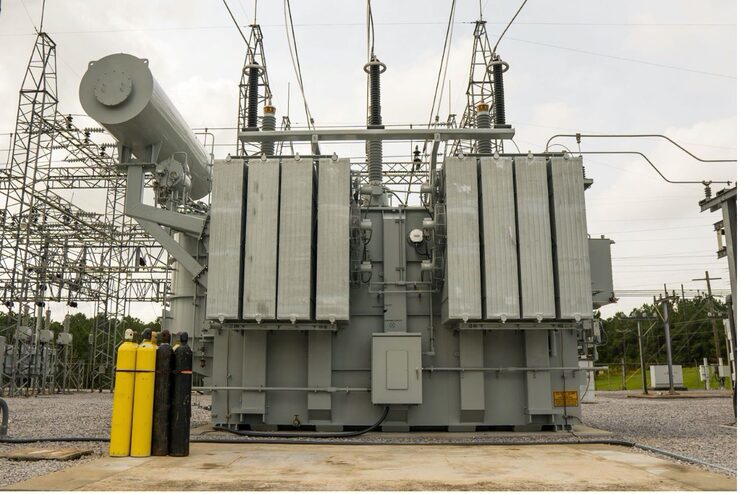When looking for an electrical transformer, you may have noticed there are a lot of different options available. However, there are only two general categories for transformer types: liquid cooled and dry-type. When it comes to selecting a transformer for your specific needs, it’s important to understand the difference between these two types. In some cases, you can use either one, but sometimes one is better than the other. In many cases, it’s better to choose a dry-type.
What are dry-type transformers?
An electrical transformer is a piece of equipment that reduces power circuit voltage. During this process, a large amount of heat gets generated as energy and transferred between circuits. Unfortunately, high levels of heat can cause a transformer to malfunction, which is why they come with a cooling system. A dry-type transformer dissipates heat through air currents and solid insulation, as opposed to a liquid transformer that uses oil to cool down.
What are the benefits of a dry-type transformer?
Dry-type transformers have many benefits over oil transformers. The key benefits include:
· Safety. When you hear about transformers exploding or catching fire, it’s almost always an oil-filled transformer. Dry-types are safer because they don’t use oil. Oil is highly flammable and makes liquid transformers dangerous.
· Can be used indoors. Since they’re generally quiet and much safer than oil-filled transformers, a dry-type can be safely installed indoors with the right enclosure.
· Can be used outdoors. When protected in the right enclosure, a dry-type transformer can be installed outdoors.
· More environmentally-friendly. The oil used in transformers is toxic, and it contaminates the soil and water when spilled or leaked. Unfortunately, transformer oil does get into the ground sometimes, and it’s not easy to dispose of the oil. Oil transformers also emit harmful gases that aren’t good to breathe.
· Easier to install. Unlike oil-cooled transformers, which require additional mechanisms to catch leaking oil and protect against fire, dry-type transformers don’t require any extra protective systems to be installed first.
Dry-type transformers are often a better investment
There are some situations where a dry-type transformer is not a good solution. For example, if you need to convert extremely high voltage, you won’t be able to use a dry-type. However, if you have the option of choosing either type, a dry-type can be a better investment under certain circumstances.
For example, if you plan on using your transformer for decades, then a dry-type can provide you with a higher ROI simply because it will last longer. When you buy a transformer from a reputable manufacturer, you’ll get a solid warranty and it will be built by expert craftsmen who use only the best quality materials. For example, while some companies use cheap, thin insulation that wears out fast and causes premature failure, others use higher-quality insulation, like Nomex.
Ultimately, you will spend more money to get a quality dry-type transformer, but it’s worth the higher price tag because of the reliability. The last thing you want is for your electrical transformer to fail. There are three reasons premature transformer failure will harm your business:
· You’ll have unexpected downtime. Whether your business has to pause for hours, days, or weeks, every minute of downtime will cost you money and customer trust.
· There’s a transformer shortage. When a transformer fails, you’ll need to replace it, but that’s not easy right now. Thanks to the transformer shortage, you’ll experience more downtime than you think.
· You’ll have to spend even more money. If your transformer fails, you’ll be back to square one, having to buy another unit. Even if you get lucky and can find an available transformer, it’s money you wouldn’t have to spend if you had purchased from a reputable manufacturer from the start.
Is a dry-type transformer right for your application?
Maybe you’ve looked at dry-type transformers and figured it was better to stick with oil because that’s all you’ve ever used. Or, maybe you aren’t sure about investing the extra cash to get a dry-type. Whatever your situation, if you need to convert low-to-medium voltage, there’s a good chance a dry-type transformer might be beneficial.
If you’re on the fence, or you’re now considering getting a dry-type, start making some calls and find out if a dry-type is ideal for your needs. If it is, consider getting a dry-type instead of oil. If you spend the extra money now, it will help prevent future lost revenue from choosing a low-quality transformer.
Keep an eye for more latest news & updates on Internal Insider!










